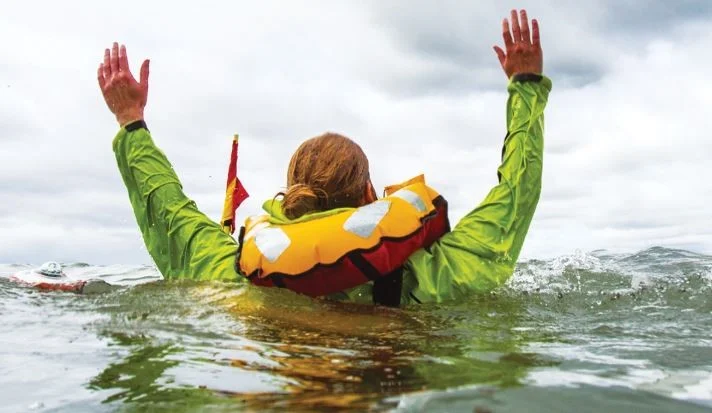If there’s one name that resounds on the bridge of every ship, in the engine room, and in safety drills, it’s SOLAS. Whether you’re a grizzled old salt or a cadet just setting foot on board, knowing SOLAS isn’t a choice — it’s essential.
So what, then, is SOLAS? What role does it play in ensuring safety at sea? Let’s spell it out.
What Does SOLAS Stand For?
SOLAS stands for Safety of Life at Sea.
It’s a division of an international maritime convention that establishes a minimum safety standard for ships — ranging from building and equipment to navigation and emergency protocols.
Simply put, SOLAS exists to ensure ships are safe, seaworthy, and prepared to save life at sea — passengers and crew.
A Tragedy That Sparked Global Change
The origins of SOLAS go back to one of the most notorious ship disasters in history: the sinking of the RMS Titanic in 1912. More than 1,500 people lost their lives, most because there were insufficient lifeboats and inadequate emergency procedures.
This tragedy prompted the first SOLAS convention in 1914, with the goal of preventing such disasters from ever occurring again.
SOLAS has developed over the decades. The current one — the SOLAS Convention, 1974 (with amendments) — is the one that exists today, administered by the International Maritime Organization (IMO).
Who Must Obey SOLAS?
SOLAS is applicable to:
All cargo ships of more than 500 gross tonnage (GT) on international voyages
All international voyaging passenger ships
Some parts may apply even to lesser ships depending upon flag state regulations and operation type.
If a vessel fails to meet SOLAS standards, it can’t go abroad — it’s that important.
What Does SOLAS Encompass?
The convention is comprised of a number of chapters, with each dealing with a specific area of vessel safety.
Chapter I – General Provisions
Deals with definitions, application, and inspection practices. It also requires the issuance of safety certificates.
Chapter II – Construction and Fire Protection
Divided into:
II-1: Concerns shipbuilding, stability, machinery, and electrical installations.
II-2: It lays out the standards for fire prevention, onboard firefighting gear, and emergency response protocols
Chapter III – Life-Saving Appliances and Arrangements
Sets requirements for lifeboats, life jackets, muster stations, survival craft drills, and emergency evacuation.
Chapter IV – Radio Communications
Guarantees that ships are equipped with the right GMDSS (Global Maritime Distress and Safety System) equipment for distress alerting and communications.
Chapter V – Safety of Navigation
Applies to all ships, including fishing vessels and small craft. Comprises provisions on charts, route planning, lookout, and bridge equipment such as radar and AIS.
Chapter VI – Carriage of Cargoes
Describes how cargo must be stowed, managed, and recorded to avoid shifting or accidents in transit.
Chapter VII – Carriage of Dangerous Goods
Addresses requirements for carrying dangerous cargo — such as packaging, labeling, stowage, and emergency preparedness.
Chapter VIII – Nuclear Ships
Covers the construction and operation of ships powered by nuclear energy. While rare, nuclear ships are treated with special safety standards due to the potential risks involved.
Chapter IX – Safety Management (ISM Code)
Introduces the International Safety Management Code, requiring shipping companies and ships to have safety procedures and periodic audits.
Chapter XI-1 and XI-2 – Special Measures
Discusses increased surveys, ship identification numbers, and maritime security (ISM Code and ISPS Code come under here).
Chapter XII – Additional Safety Measures for Bulk Carriers
Specifically included to enhance safety on bulk carriers, which have a particular set of risks from cargo shifting and structural stress.
Chapter XIII – Verification of Compliance
This chapter introduced IMO auditing, allowing inspections of member states to verify they are implementing SOLAS and other IMO rules effectively.
Chapter XIV – Safety Measures for Ships Operating in Polar Waters
Added in 2017, this chapter recognizes the growing number of vessels operating in the Arctic and Antarctic. These regions present extreme challenges: sub-zero temperatures, drifting ice, and little infrastructure in case of emergencies.
To operate in polar waters, ships must now follow the Polar Code, which includes:
Special ship design and ice-strengthened hulls
Crew training for polar navigation
Survival equipment suited for freezing conditions
A Polar Ship Certificate and a Polar Water Operational Manual (PWOM)
This chapter ensures ships in these harsh environments are equipped to protect both lives and the fragile polar ecosystem
Why SOLAS is Important Aboard
SOLAS isn’t just forms filling up a folder on the bridge. It appears in your daily operations:
That fire drill you conducted? SOLAS.
The quantity of lifeboats onboard your vessel? SOLAS.
Navigation gear you utilize? Yes — SOLAS again.
It’s a pragmatic rulebook for keeping ships prepared for the unexpected — from flooding and fires to abandon-ship situations.
How Is Compliance Ensured?
To ensure ships comply with SOLAS, they go through:
- Flag state inspections
- Port State Control inspections
- Class surveys
- Certification audits
Non-compliance can mean fines, port detention, or even cancellation of the ship’s safety certificates — no sailing, in other words.
Final Word
SOLAS isn’t only a matter of law — it’s the foundation of maritime safety. All the checklists, safety exercises, and inspections you conduct stem from this international framework.
Whether you’re charting a course, checking your lifeboat release gear, or simply conducting a fire door inspection — it all leads back to one thing: safeguarding lives at sea.
Because in the grand scheme of things, ships can be replaced. People can’t.


